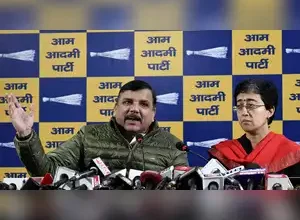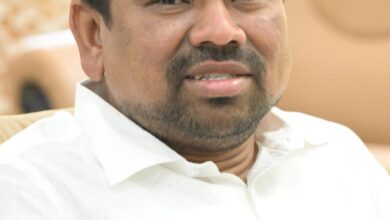
In a crucial diplomatic engagement, Prime Minister Narendra Modi met with USA’s National Intelligence Director Tulsi Gabbard, describing her as a “strong votary of India-US friendship.” The high-profile meeting, held in New Delhi, reinforced the growing strategic alliance between the two nations, focusing on intelligence sharing, defense cooperation, and economic collaboration.
Key Takeaways from the Modi-Gabbard Meeting
The discussions between PM Modi and Tulsi Gabbard revolved around strengthening bilateral ties across multiple domains, including:
✔ Defense & Intelligence Sharing – Enhancing counterterrorism strategies and sharing critical intelligence for global security.
✔ Economic Cooperation – Strengthening US-India trade partnerships, especially in technology, defense, and energy sectors.
✔ Indo-Pacific Strategy – Aligning efforts to ensure stability in the Indo-Pacific region, countering geopolitical threats.
Tulsi Gabbard: A Strong Advocate for India-US Relations
A known supporter of India-US strategic collaboration, Tulsi Gabbard has consistently emphasized the importance of bilateral relations. She has previously lauded India’s role in global stability and advocated for stronger trade, defense, and intelligence ties between the two democracies.
During the meeting, PM Modi appreciated her efforts in deepening India-US relations, highlighting her role in fostering mutual trust and cooperation between Washington and New Delhi.
Strengthening India-US Defense and Security Ties
One of the primary focus areas of the discussion was defense collaboration. With India emerging as a key partner in the Indo-Pacific security framework, both sides explored new avenues for:
Advanced defense technology exchange
Joint military exercises
Enhanced intelligence cooperation to combat cybersecurity threats and terrorism
This partnership aligns with India’s growing defense budget, which reached ₹6.21 lakh crore ($75 billion) in 2024, making India one of the top military spenders globally. The US has been a key defense supplier, providing advanced fighter jets, drones, and missile defense systems.
Economic Growth and Bilateral Trade Boost
With India-US trade surpassing $190 billion in 2024, economic cooperation was another vital agenda. Tulsi Gabbard emphasized expanding investments in technology, clean energy, and digital infrastructure.
PM Modi reiterated India’s commitment to:
Attracting US tech firms to invest in AI, semiconductor manufacturing, and cybersecurity
Strengthening pharmaceutical and healthcare collaborations
Boosting renewable energy partnerships, especially in solar and hydrogen energy
Indo-Pacific Strategy and Global Geopolitical Landscape
As tensions rise in the Indo-Pacific region, both leaders stressed the need for stability and open trade routes. India and the US have been working closely through QUAD (Quadrilateral Security Dialogue) alongside Japan and Australia, countering China’s growing influence.
The meeting also focused on increasing maritime security cooperation, ensuring freedom of navigation in critical sea routes.
Diplomatic Takeaways & Future Collaboration
This high-profile discussion sets the stage for:
✔ Greater US investment in India’s defense and technology sectors
✔ Strengthened intelligence sharing mechanisms
✔ Increased collaboration on global security issues, including counterterrorism
✔ Expanding India’s role as a global economic and strategic powerhouse
What’s Next? Strengthening the India-US Alliance
As India and the US continue to solidify their strategic partnership, future engagements will focus on:
Advanced AI and defense technologies
Expanding US-India energy cooperation
Strengthening Indo-Pacific security frameworks
With Tulsi Gabbard’s visit marking a key milestone, this meeting underscores the deep-rooted friendship between India and the US, shaping a stronger, more secure global future.







